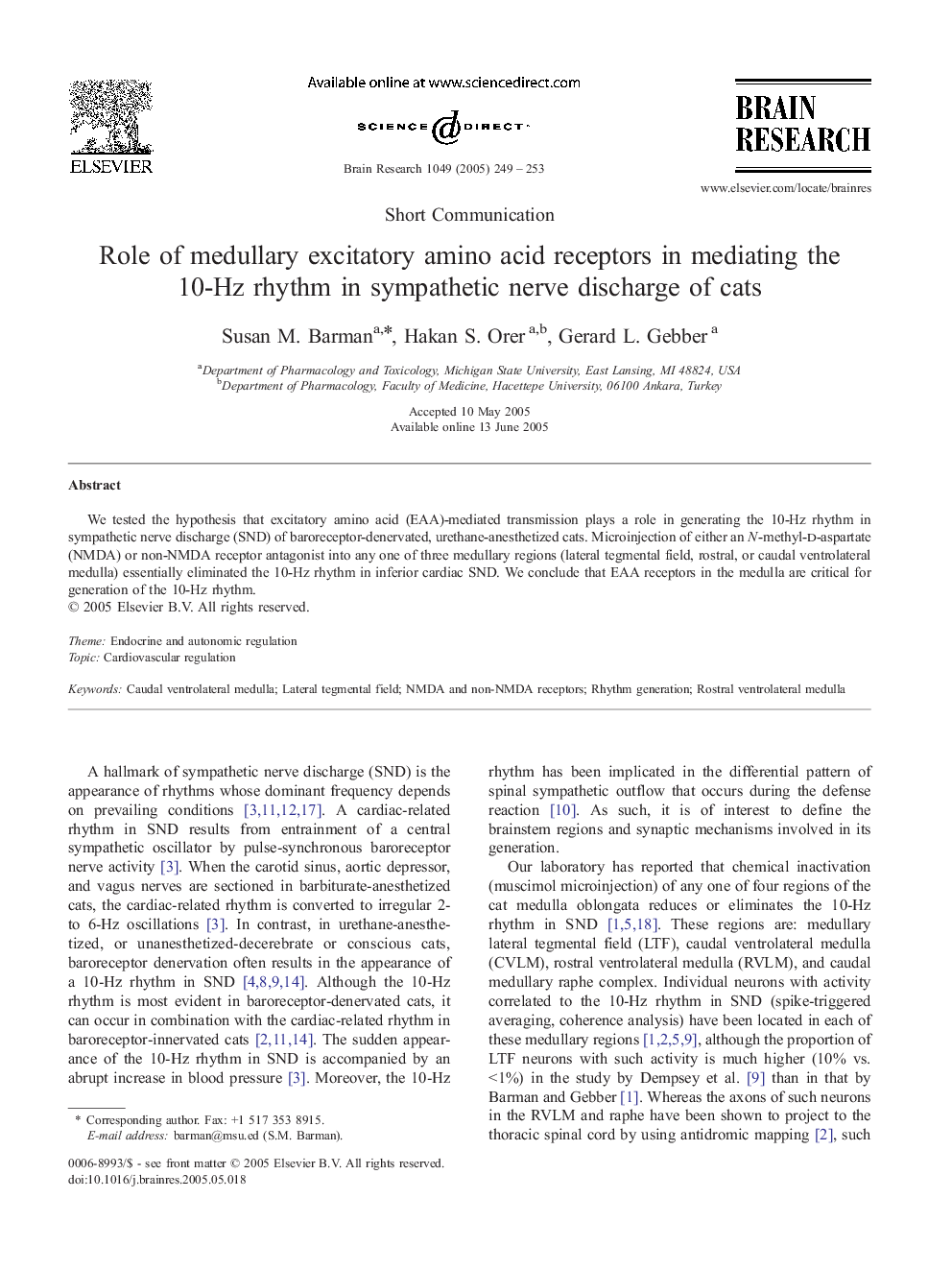| Article ID | Journal | Published Year | Pages | File Type |
|---|---|---|---|---|
| 9416165 | Brain Research | 2005 | 5 Pages |
Abstract
We tested the hypothesis that excitatory amino acid (EAA)-mediated transmission plays a role in generating the 10-Hz rhythm in sympathetic nerve discharge (SND) of baroreceptor-denervated, urethane-anesthetized cats. Microinjection of either an N-methyl-d-aspartate (NMDA) or non-NMDA receptor antagonist into any one of three medullary regions (lateral tegmental field, rostral, or caudal ventrolateral medulla) essentially eliminated the 10-Hz rhythm in inferior cardiac SND. We conclude that EAA receptors in the medulla are critical for generation of the 10-Hz rhythm.
Keywords
Related Topics
Life Sciences
Neuroscience
Neuroscience (General)
Authors
Susan M. Barman, Hakan S. Orer, Gerard L. Gebber,
